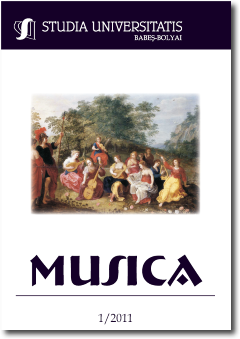ASPECTS OF THE VOCAL-SYMPHONIC GENRE
Keywords:
vocal-symphonic, oratorio, cantata, subgenreAbstract
The vocal-symphonic genre is expressed by employing an apparatus that includes the orchestra, the choir and the soloists. It is to be found in several instances: the musical theatre – opera; without means of theatrical expression – oratorio, and cantata. The borderline between oratorio and cantata is placed in embracing lyrical and epical aspects – in the case of the cantata – or dramatic – in the case of the oratorio. The oratorio is divided in two categories according to the text: the secular and religious oratorio. The religious oratorio has several subgenres given by the use of a pre-established text: Requiem, Mass, Passion, Te Deum, Stabat Mater, and others.
References
Chelaru, Carmen, Cui i-e frică de istoria muzicii?! (Who Is Afraid of Music History?), vol. II, Artes Publishing House, Iaşi, 2007.
Coresi, Theodore, Capodopere muzicale inspirate din liturghie (Musical Masterpieces Inspired from the Liturgy), Musical Publishing House, Bucharest, 2008.
Coresi, Theodore, Dramaturgie şi retorică în muzica de cult creştină (Dramaturgy and Rhetoric in Christian Cult Music), Musical Publishing House, Bucharest, 2008.
François-Sappey, Brigitte, Istoria muzicii în Europa (The History of Music in Europe), Ed. Grafoart, Bucharest, 2007.
Timaru, Valentin, Analiza muzicală între conştiinţa de gen şi conştiinţa de formă (Musical Analysis between Genre Awareness and Form Awareness), University Publishing House, Oradea, 2003.
Timaru, Valentin, Dicţionar noţional şi terminologic (Notions and Terminology Dictionary), University Publishing House, Oradea, 2004.
Downloads
Published
How to Cite
Issue
Section
License
Copyright (c) 2011 Studia Universitatis Babeș-Bolyai Musica

This work is licensed under a Creative Commons Attribution-NonCommercial-NoDerivatives 4.0 International License.



